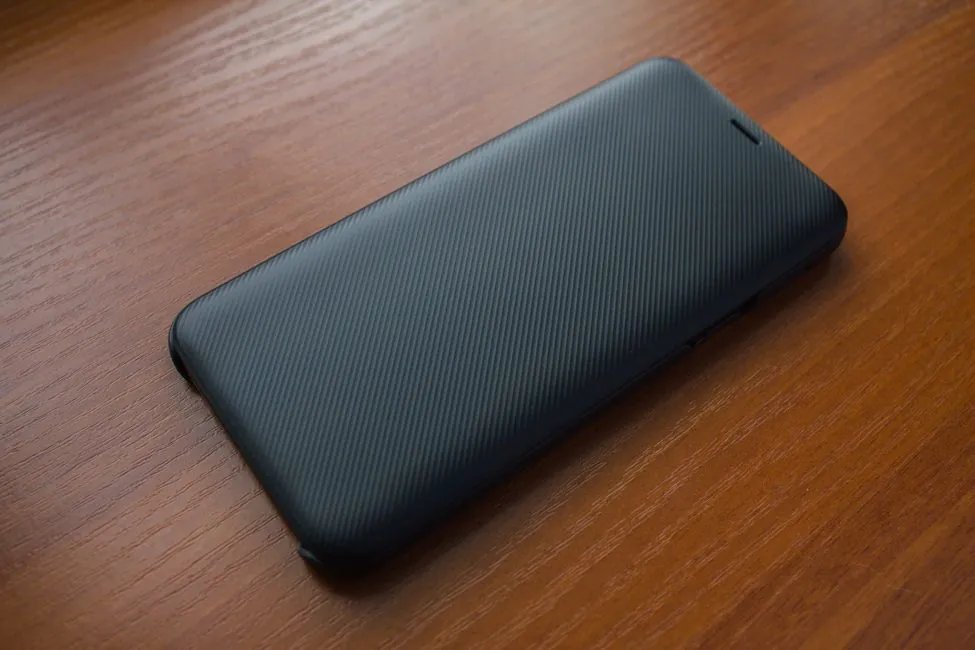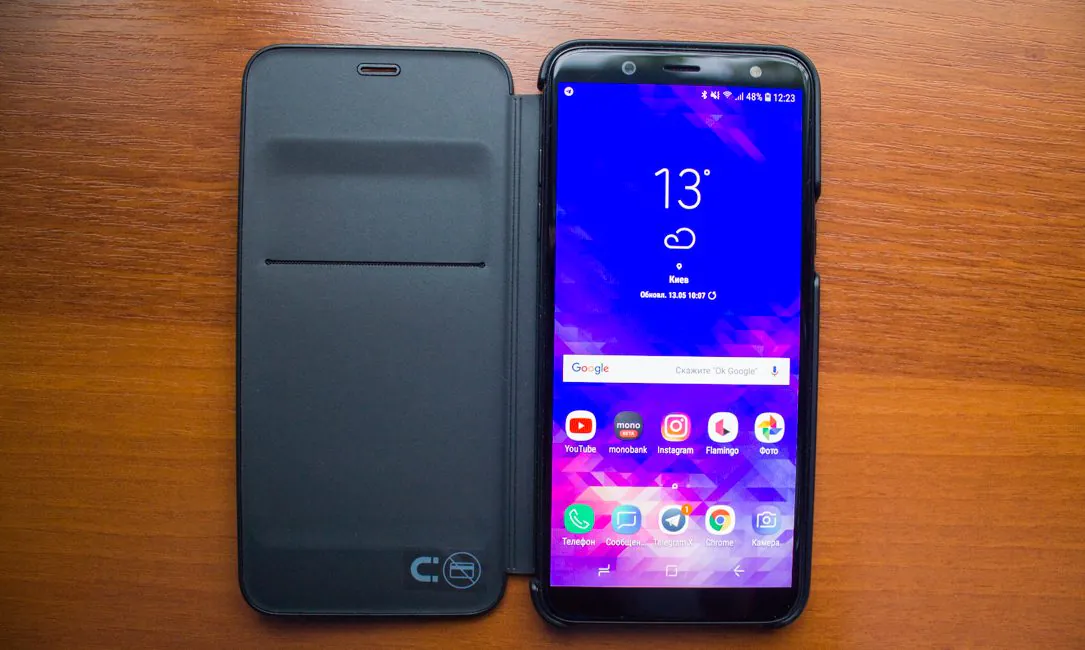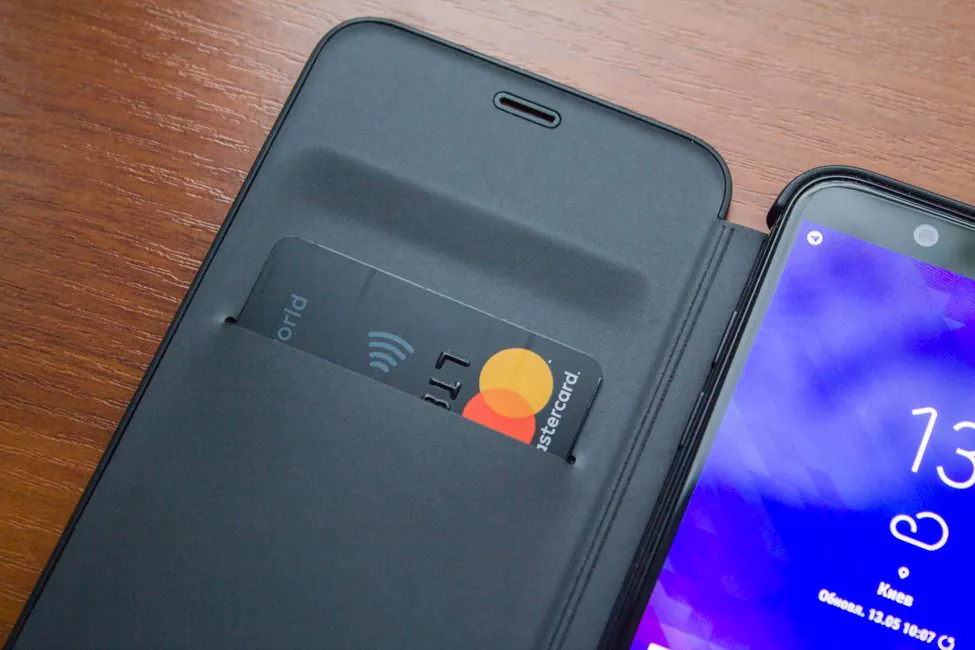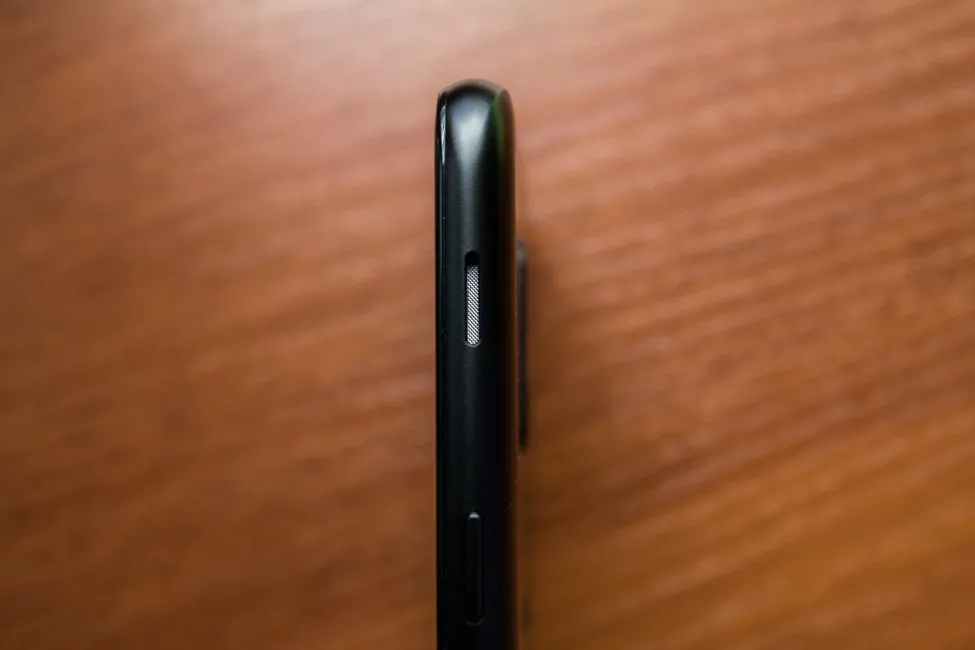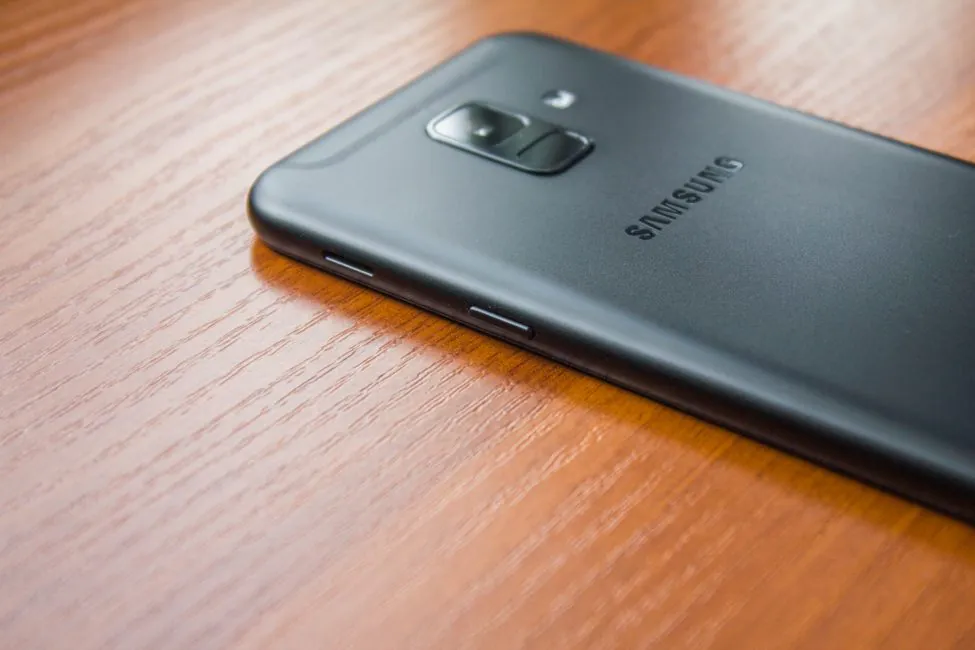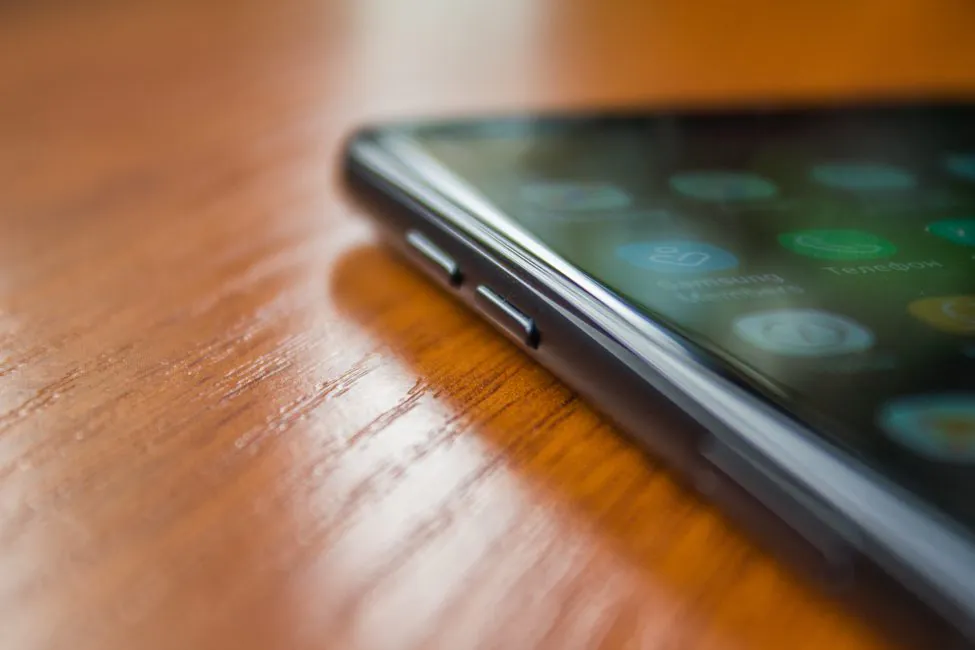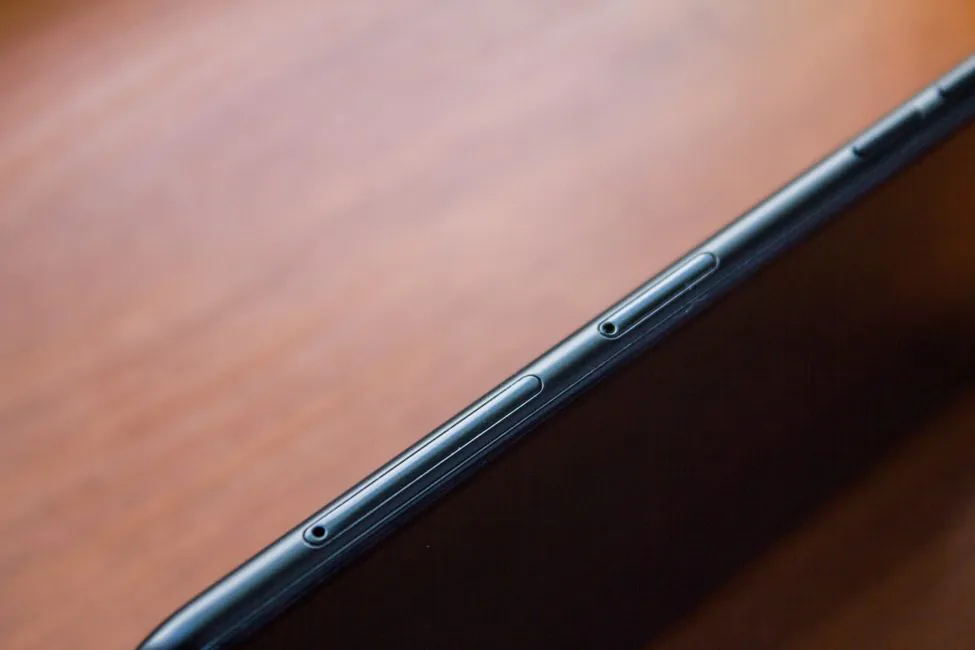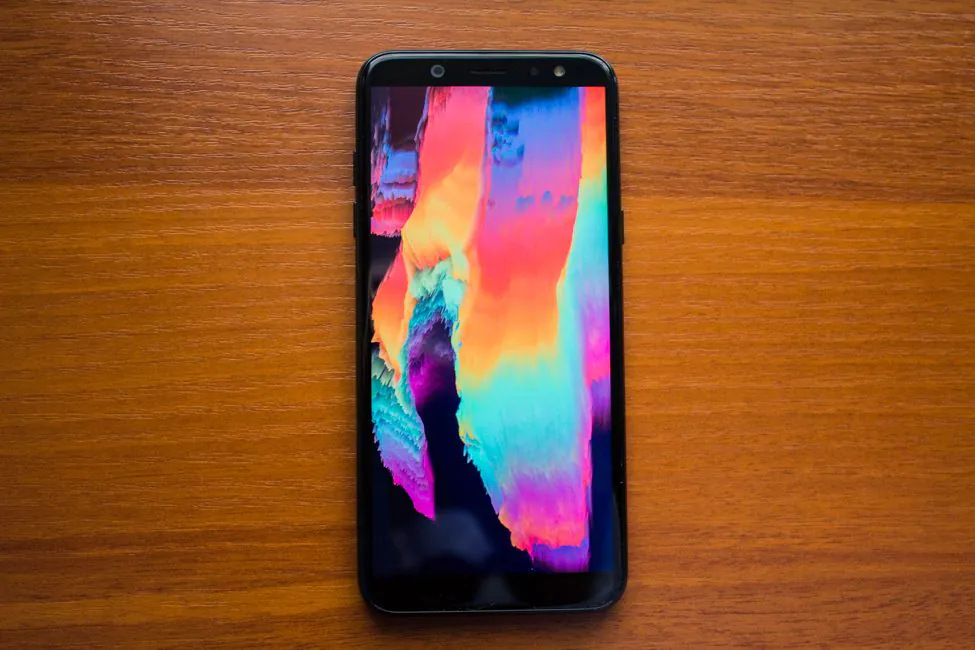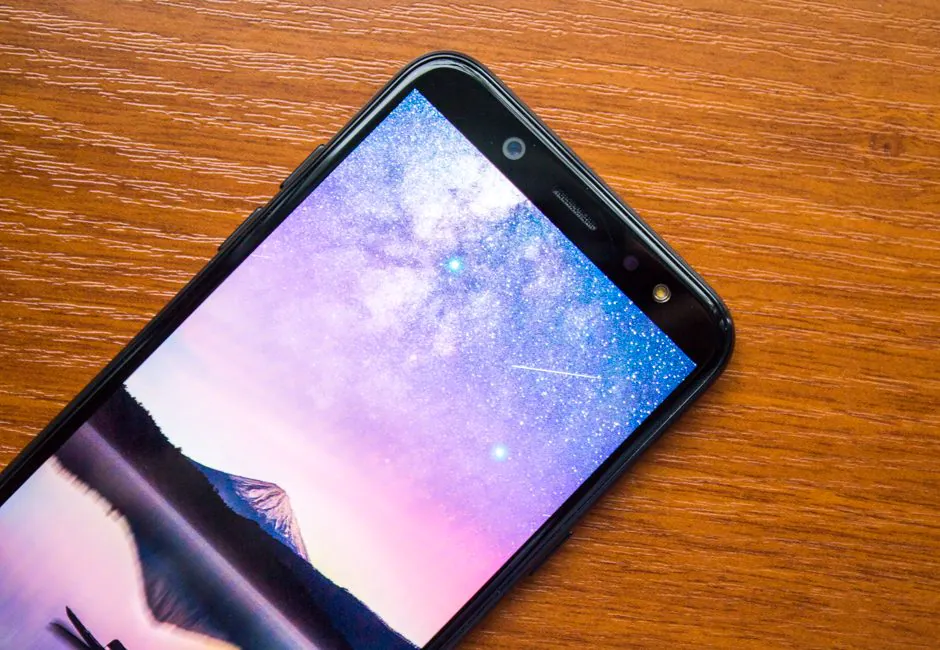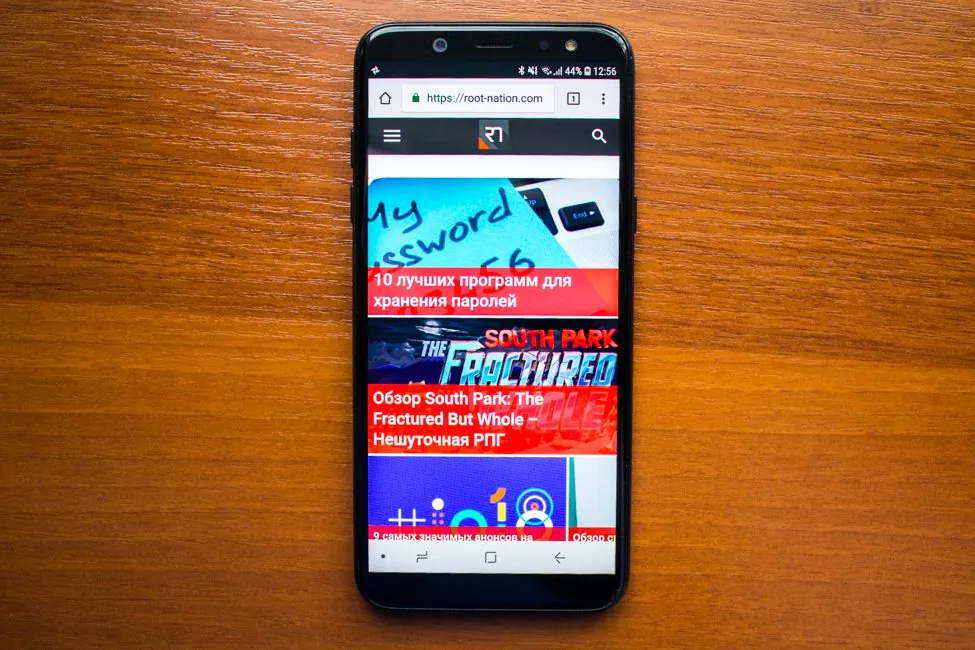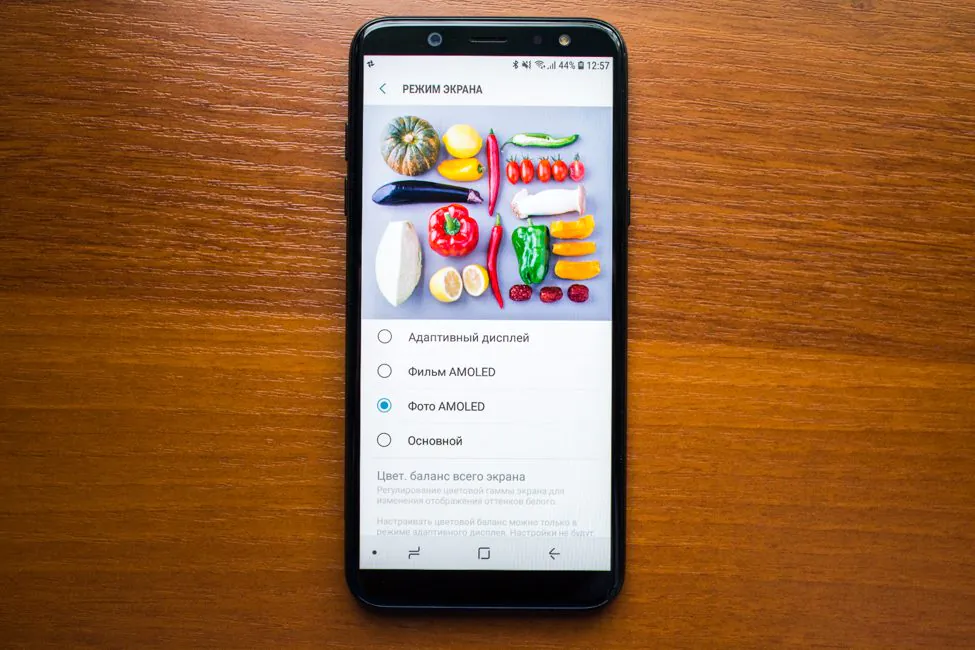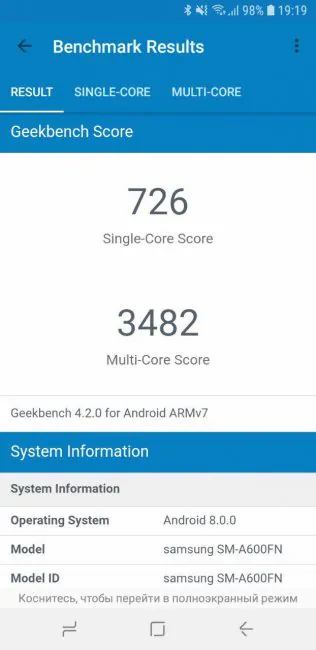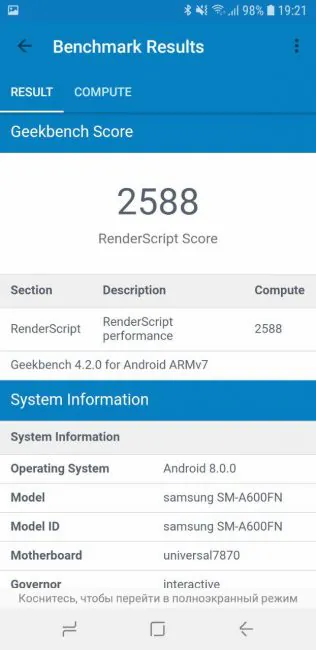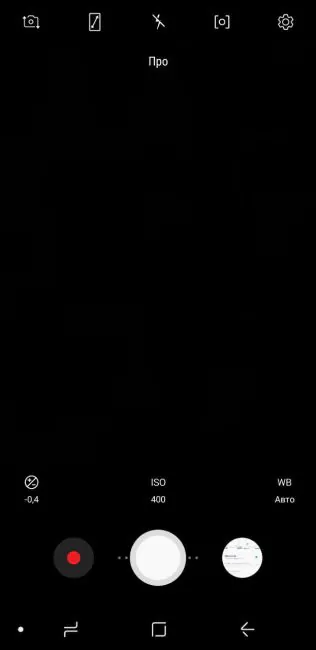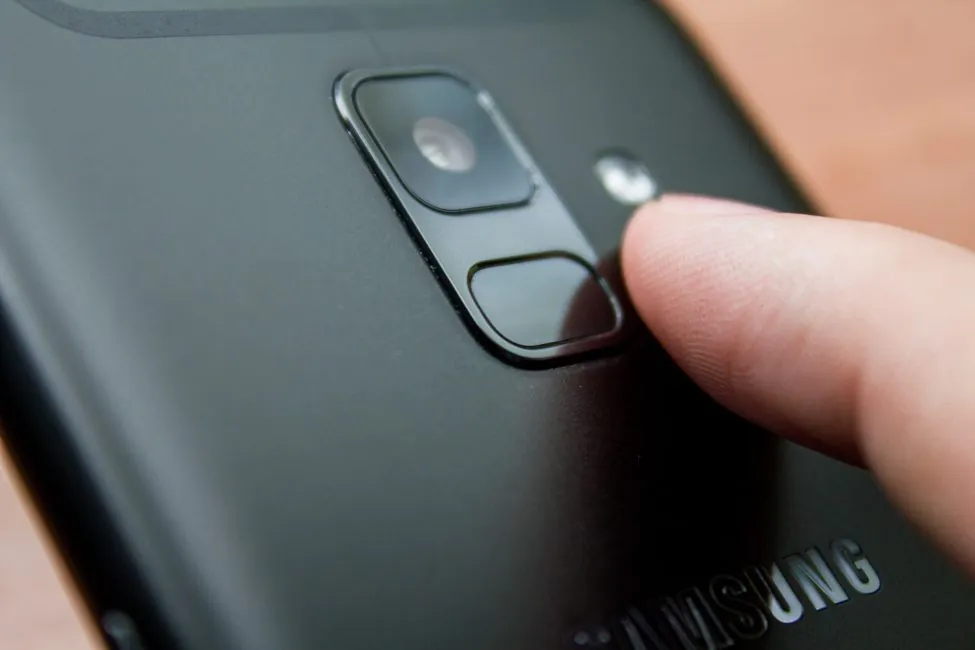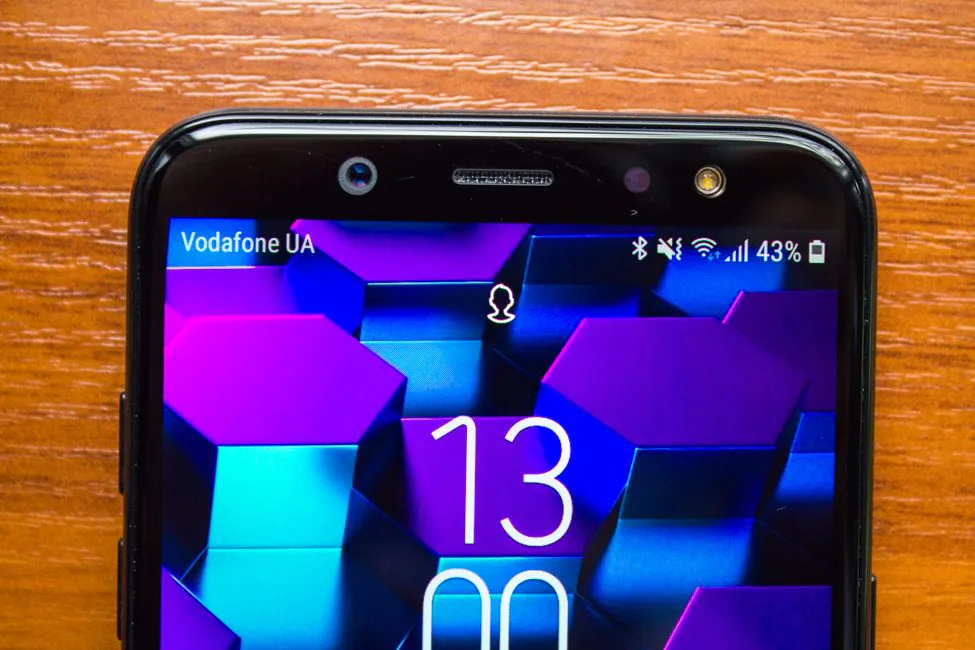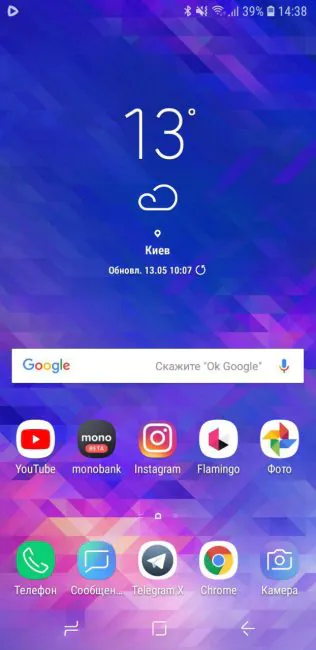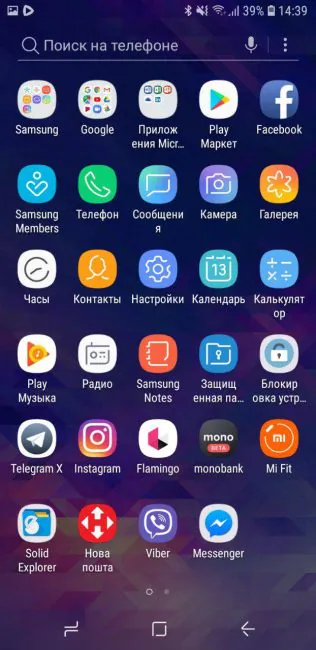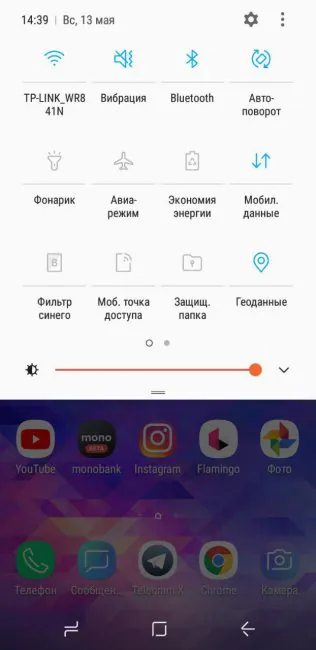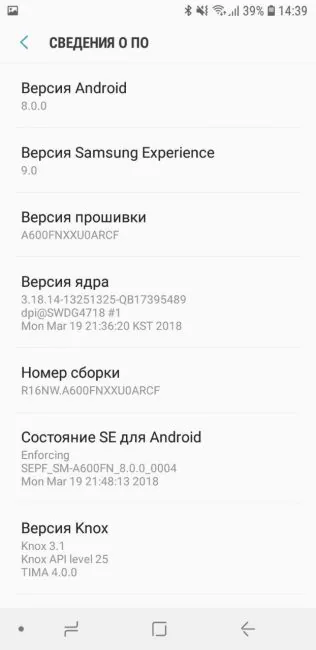© ROOT-NATION.com - Use of content is permitted with a backlink.
Only recently Samsung announced a line of new A series smartphones. We got our hands on the junior Samsung Galaxy A6 (2018) model. Let’s see what separates it from the others.
Samsung Galaxy A6 (2018) specs
- Display: 5.6 “, SuperAMOLED, 1480×720 pixels, the aspect ratio of 18.5:9
- Processor: Samsung Exynos 7870, 8-core with a clock speed of 1.6 GHz
- Graphics Accelerator: Mali T-830
- RAM: 3 GB
- Storage: 32 GB
- Support for microSD memory cards: up to 256 GB
- Wireless networks: Wi-Fi 802.11 a/b/g/n, Bluetooth 4.2 LE, NFC
- Main camera: 16 megapixel, f/1.7, PDAF
- Front camera: 16 Mp, f/1.9
- Battery: 3000 mAh
- Dimensions: 149.9×70.8×7.7 mm
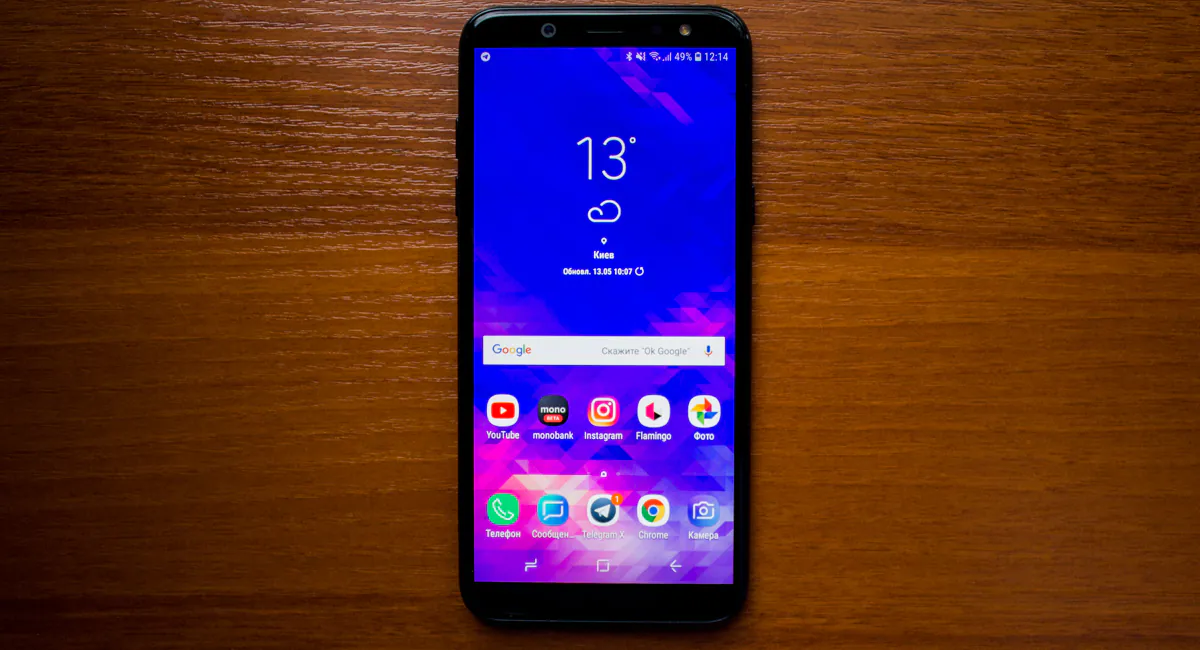
Design, materials and build quality
The design of the smartphone does not impress – it’s rather unexceptional. Only the extended screen with small bezels and 2,5D-glass separates the device from the others. There are no trendy rounded corners of the screen and curved glass on both sides. The case of the device turned out to be metal, which is a bit unusual for the company’s smartphones this year.
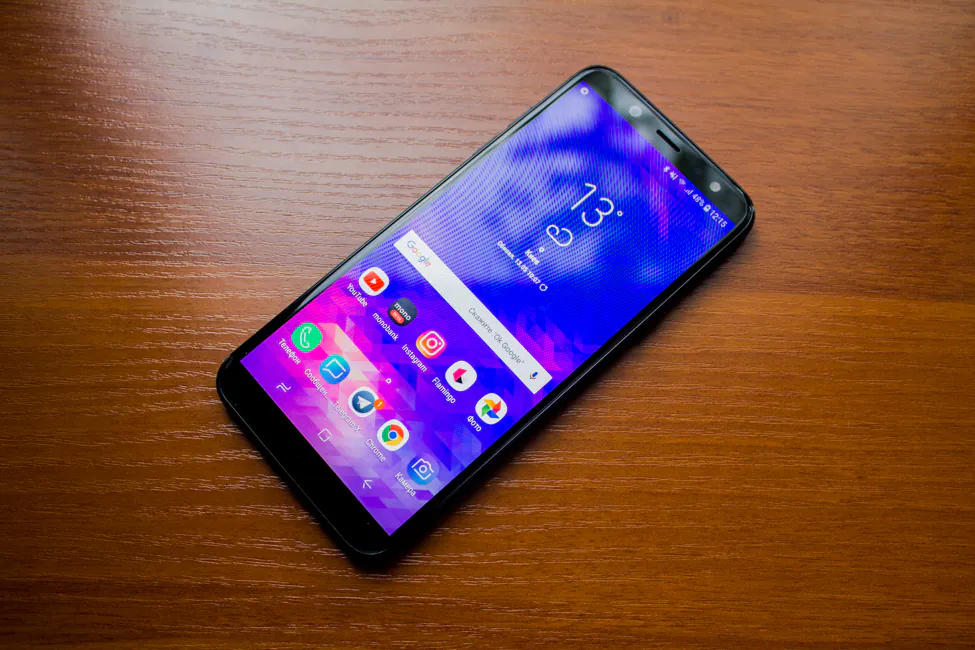
The back panel with its plastic inserts for antennas looks quite a bit like last year’s Galaxy J7.
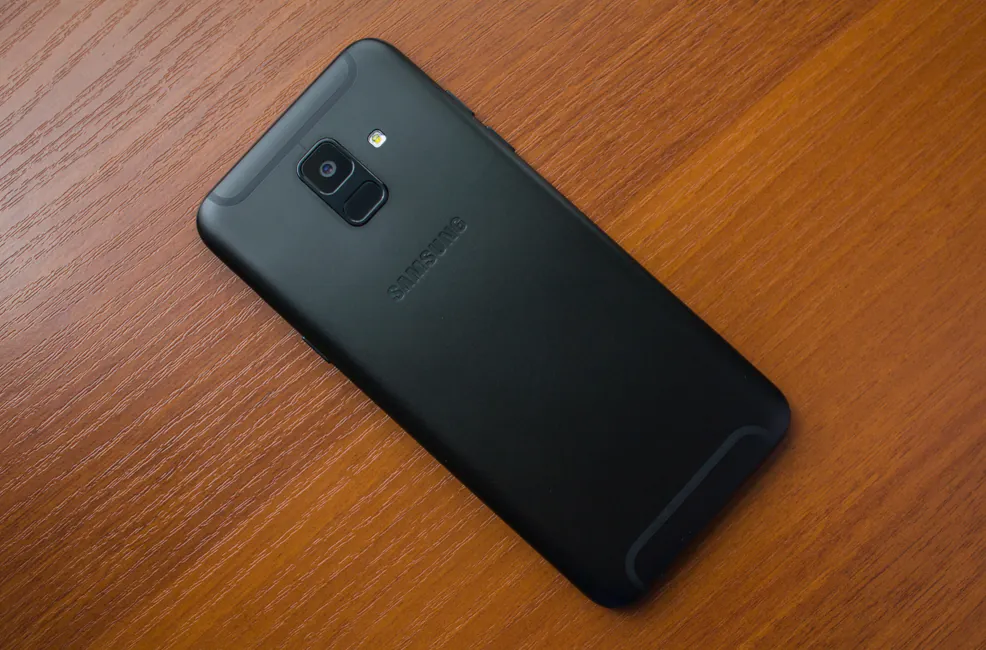
In general, the design is mundane compared with Galaxy A8 and A8+. But is it bad? If we talk tactual sense, then the answer is yes. But if we talk about the operational features, it’s probably no. After all, the metal body is more practical and durable than glass.
The build quality is first-rate. The glass is covered with a very good oleophobic coating. Mechanical buttons’ key strokes feel good and have characteristic click. My test sample is black, so there was a lot of fingerprints. Those come off easily.
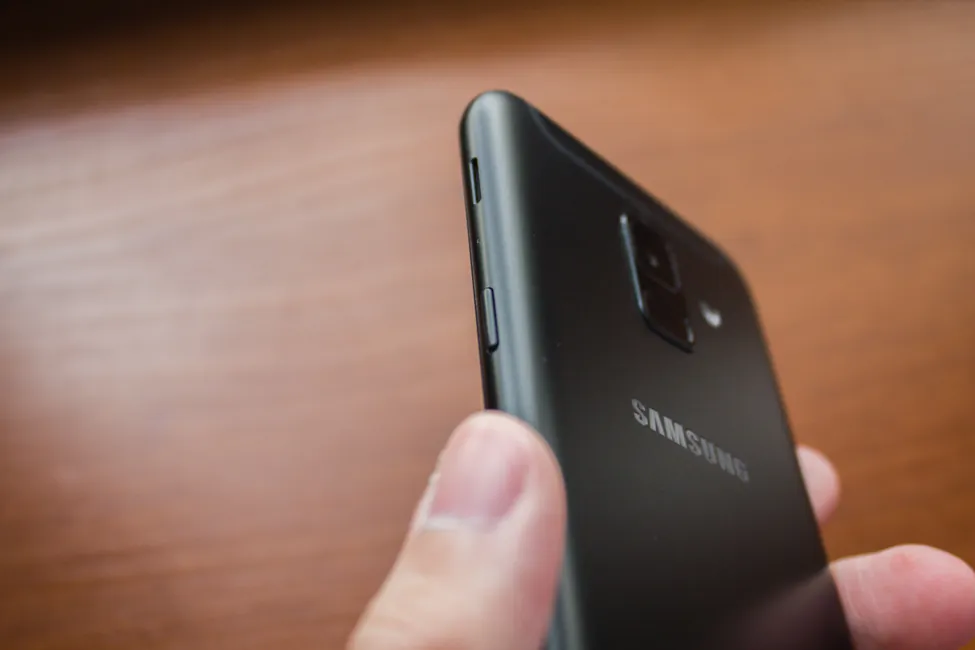
Samsung Galaxy A6 (2018) come in several colors: blue, gold, gray and black.
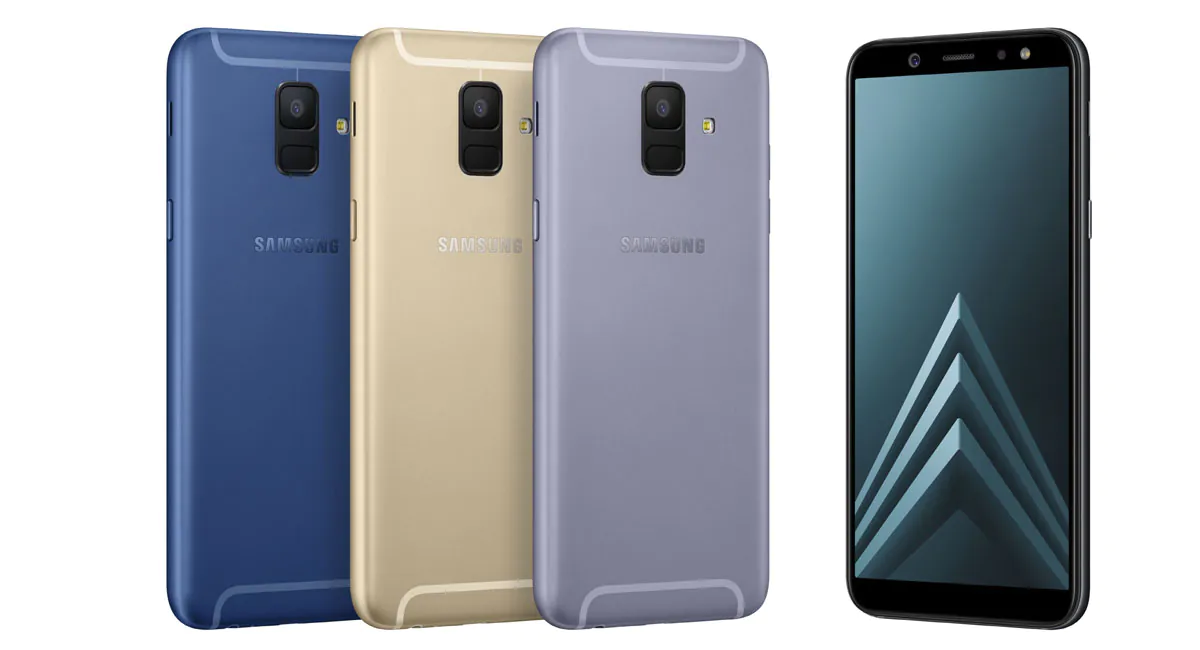
Along with the smartphone I got a case (book format) called Wallet Cover; it can be purchased separately.
There’s a pocket for plastic cards inside. The cover has a nice texture.
Elements’ Configuration
In front of the screen there is a large eye of the front camera, a cutout of the earpiece speaker, a window with proximity and light sensors, and an LED flash.
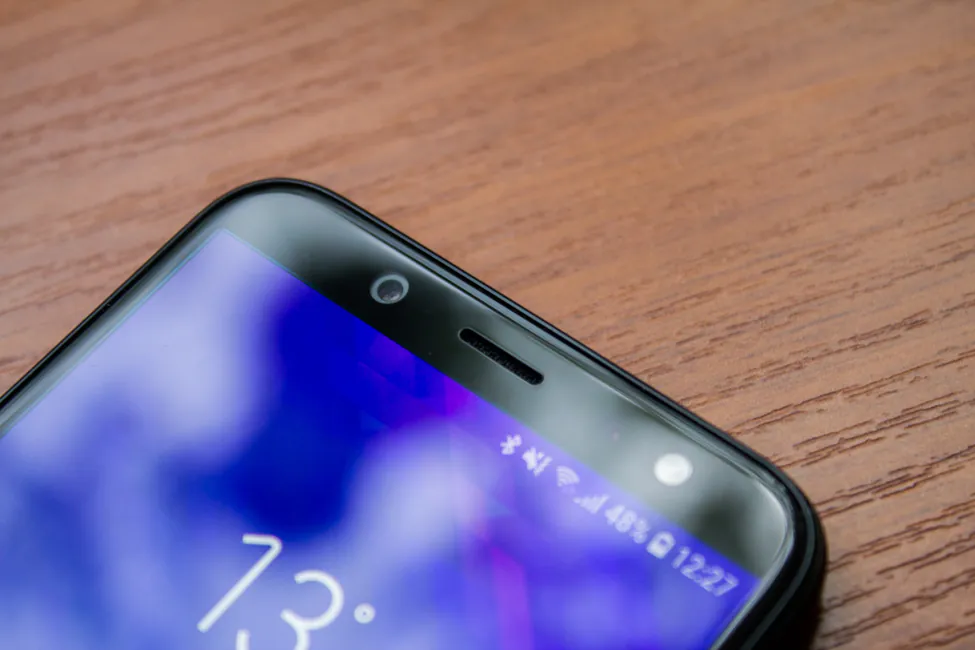
To my surprise and regret, there’s no notification indicator. Why is that I have no idea. That’s unfortunate.
There’s nothing below the screen.
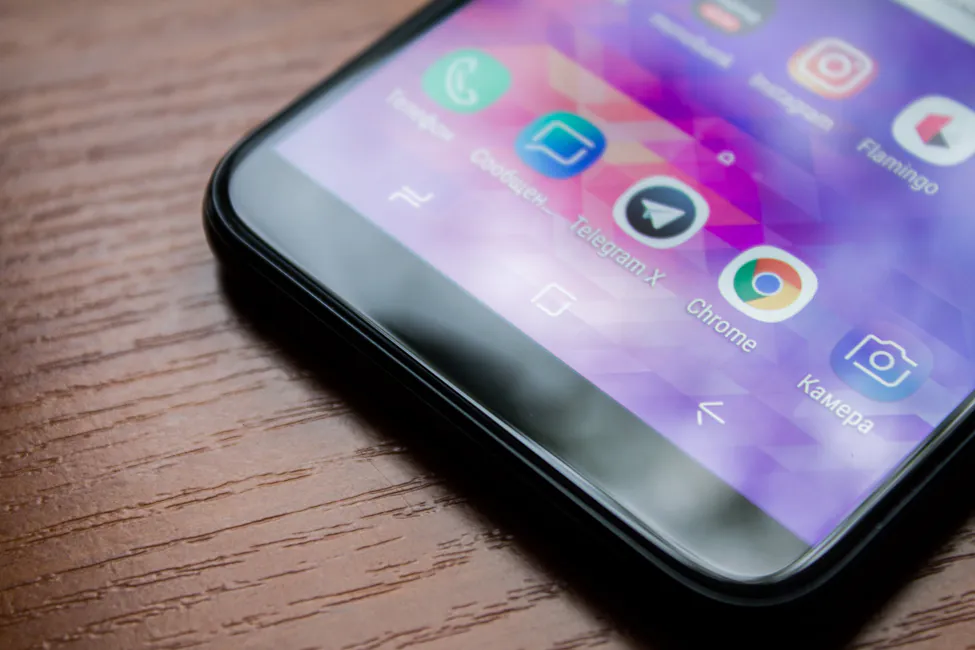
On the right side there is a power/unlock button and the main speaker.
On the left side are separate volume buttons, a slot for a SIM card (nano-format) and a separate slot for a second nano-SIM and a microSD memory card.
That is no hybrid, and the smartphone supports two SIM-cards and a memory card. Now that is good news.
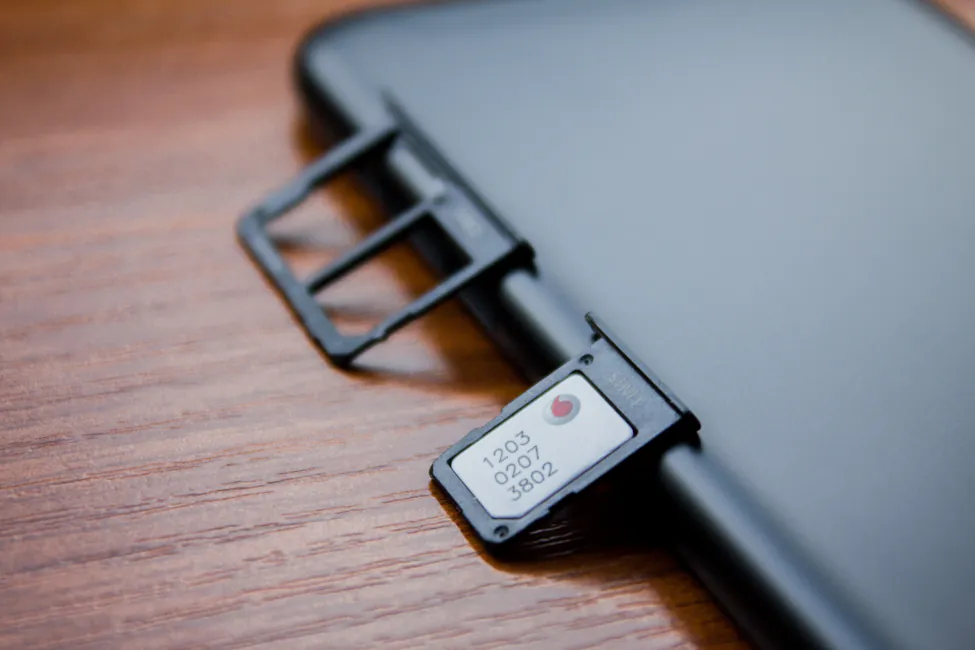
On the top edge there are two stripes of antennas passing onto a back of the gadget.
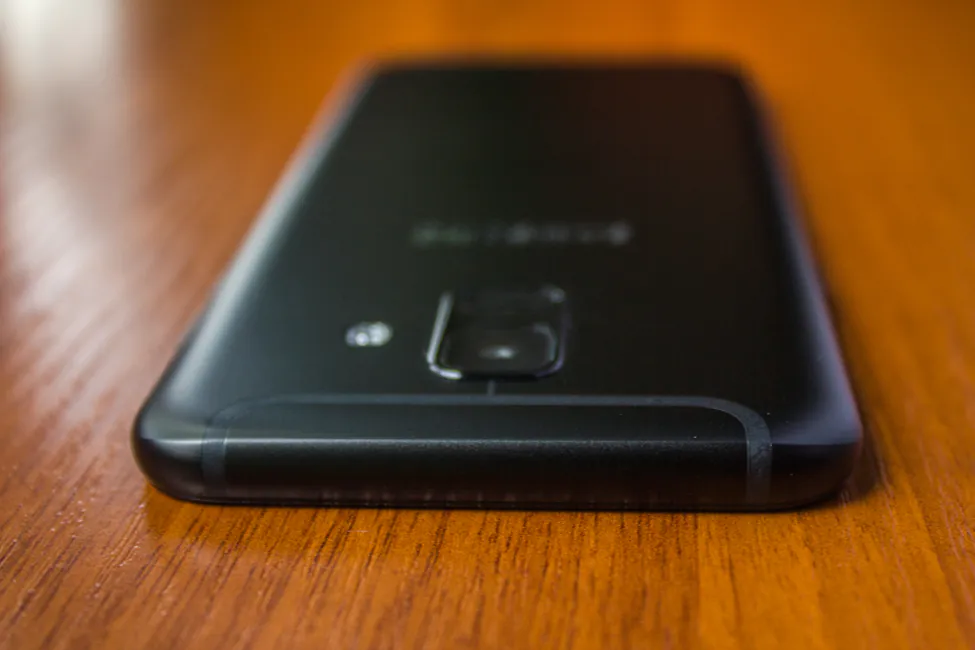
On the lower edge on the sides are a similar plastic strip of the antenna output, a 3.5 mm audio jack, the main microphone and … the microUSB port. Yes, yes, I also have no idea why Samsung decided to use such an outdated port.
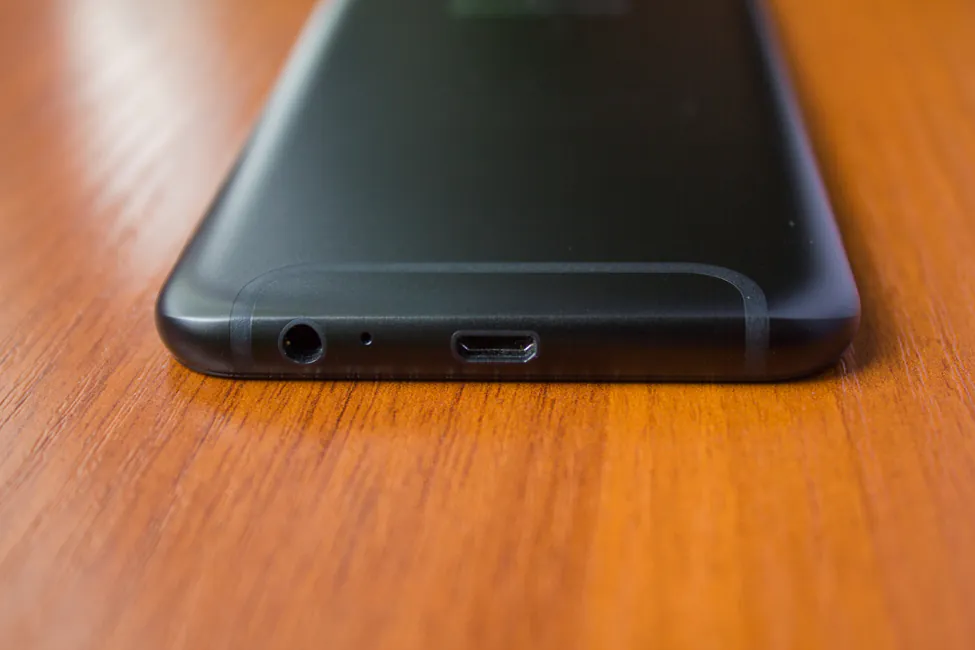
On the back of the gadget, in a special frame that slightly protrudes above the body, there is an eye of the main camera and a fingerprint scanner. The camera’s glass and the scanner’s surface are slightly recessed in this frame. To the right of the block is a double flash. Above is a plastic strip of antennas.
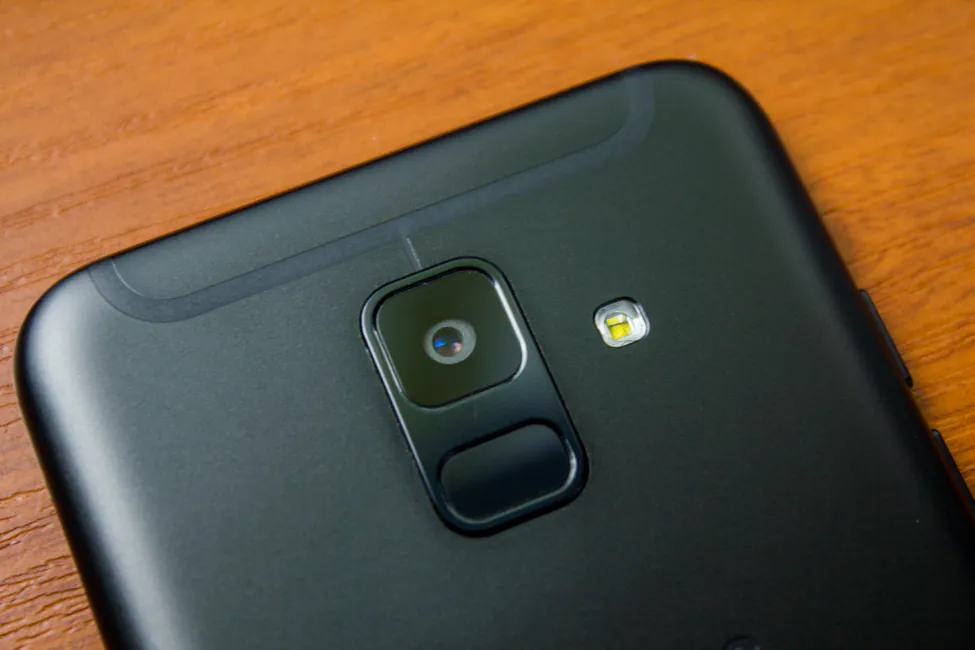
And under the block we see the embossed Samsung logo.

Below is the same strip of antennas as above.
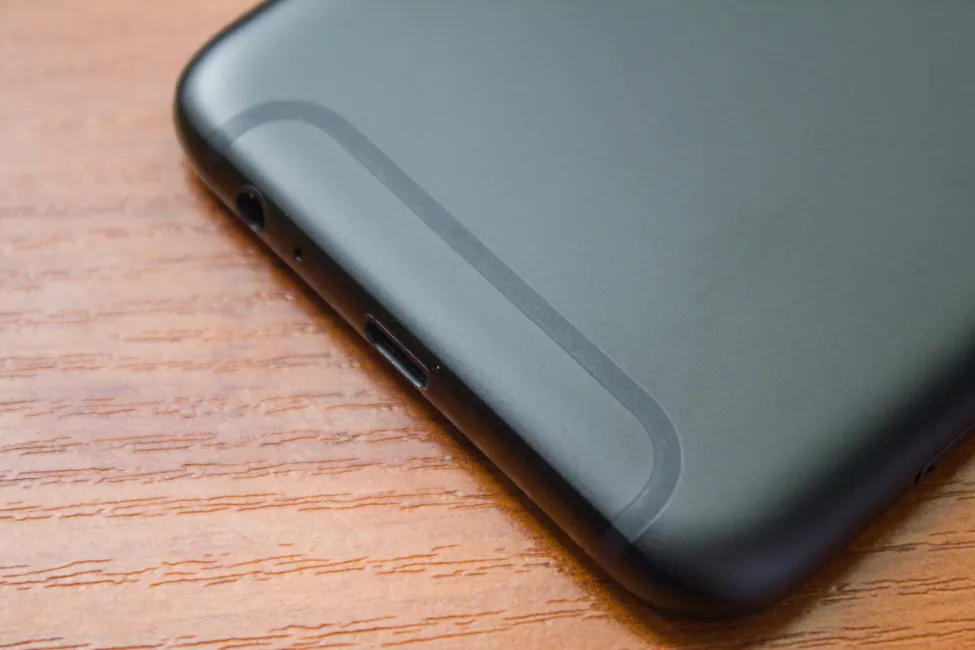
Ergonomics of Samsung Galaxy A6
No problems here. Small mass-dimensional figures and a rounded streamlined shape of the body do their job. The smartphone is both compact and convenient.
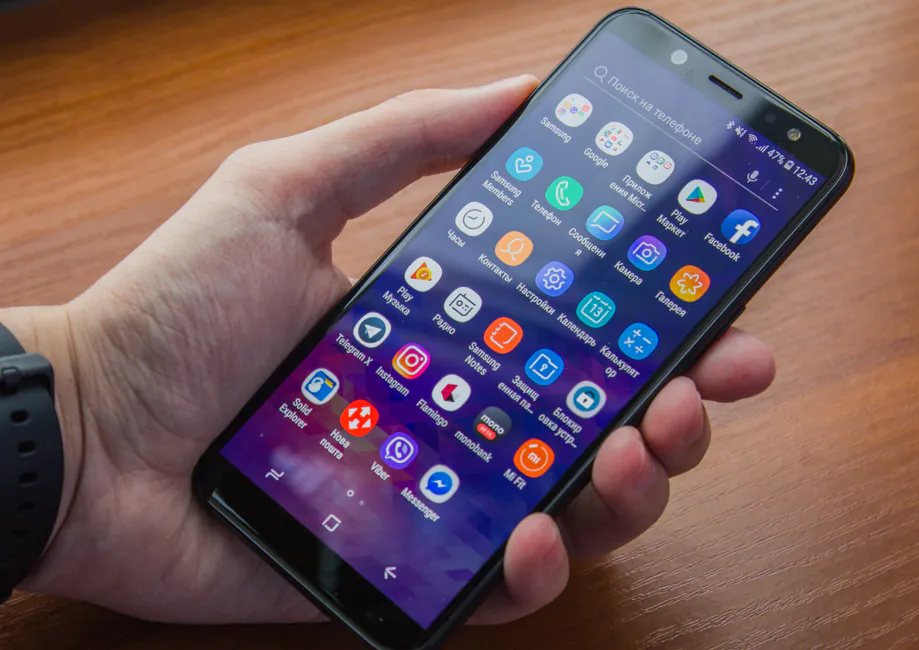
All buttons are in their right place so that there’s no need to go looking for them.
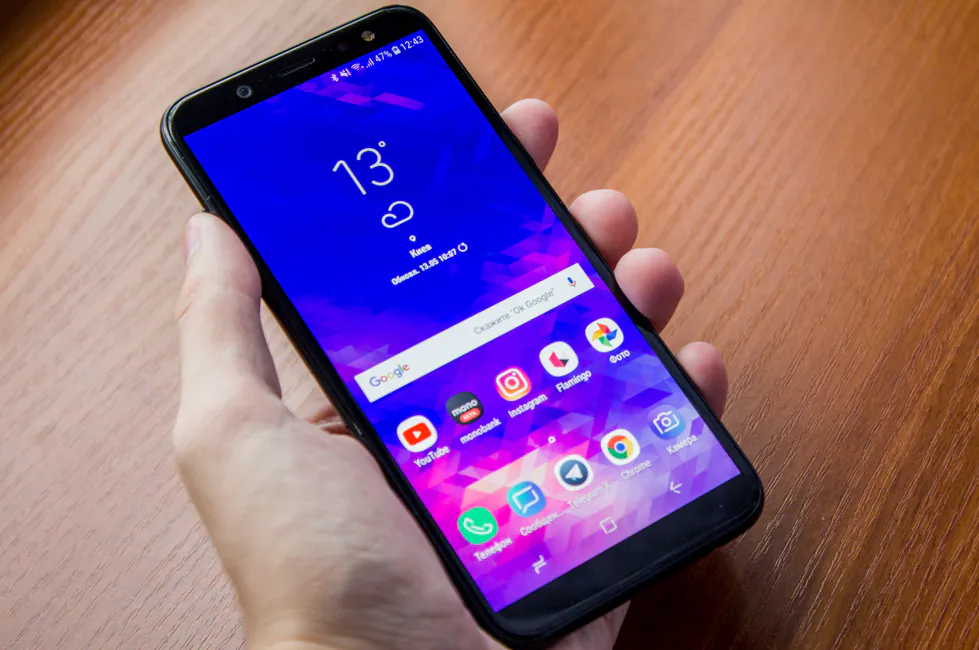
One thing bothers me, though: when using the fingerprint scanner, you can accidentally touch the glass covering the camera and leave a trace on it. But I’m nitpicking, as this happened rarely.
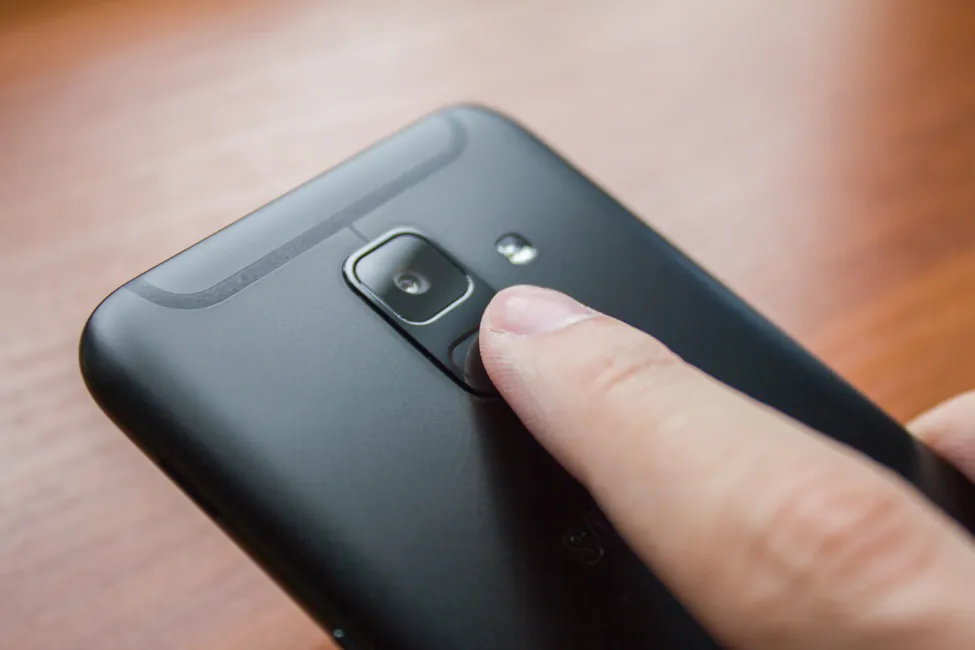
Display
Samsung Galaxy A6 is equipped with a 5.6-inch Infinity display with a ratio of 18.5:9. The screen resolution is HD+ (1440×720), the pixel density is 294 dots per inch. Matrix, of course, is SuperAMOLED.
The picture is excellent and even relatively low screen resolution is not particularly noticeable. The screen is bright as usual for Samsung, with good contrasts and saturation. You can see everything even on a sunny day. The viewing angles are excellent, although the bluish tint of the display is still here. Auto brightness works correctly.
There are several color profiles of the screen. By default, “Adaptive” is selected. You can adjust the color temperature and individual shades. In addition, there are three more modes: “AMOLED Film”, “AMOLED Photo” and the main one. With the latter the color rendition becomes more natural than with the rest.
In the screen settings you can also enable and configure the blue filter and select the applications that should be launched in full-screen mode by default.

Interestingly, I did not find the ALWAYS ON DISPLAY function in the settings, although the SuperAMOLED matrix hints at it.
Performance
The smartphone runs on Samsung Exynos 7870 processor. Technically, this is a 14-nm 8-core processor, with a maximum clock frequency of 1.6 GHz. Graphic accelerator is Mali-T830 MP1.
The results of benchmarks tests are available below.
In reality in terms of performance the smartphone is average. It is fast though. No freezes of the UI, no problems with usual apps.
The phone is not great for games, since the video core is so weak. Simple casual titles work smoothly, but in heavy games you can play comfortably only on low graphics settings, and rarely on medium ones.
The RAM in the smartphone is 3 GB, the storage is 32 GB. In some markets there is a 4/64 GB combination, but not in Ukraine, where only 3/32 GB is available. Of the 32 GB of storage the user can use 23.10 GB. No much, but the memory can be expanded with a microSD card up to 256 GB; there’s no need to compromise between the second SIM card and the memory card.
These are the results. Don’t use heavy apps and games, and the phone won’t disappoint.
Cameras of Samsung Galaxy A6
The main camera of Samsung Galaxy A6 has a resolution of 16 megapixels and f/1.7 aperture.
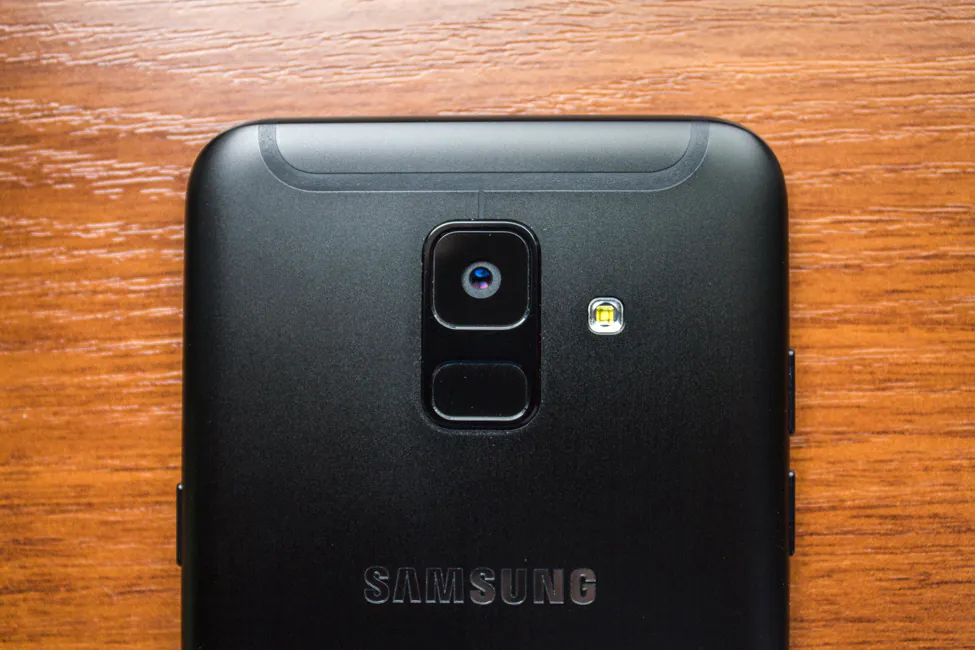
In conditions of ideal lighting, the smartphone makes quality photos with plenty of detalization. Autofocus is fast, the camera work is instantaneous. Automatic mode sometimes tries too hard in dark areas, and you have to change the exposure slider to a lower value. In some situations, you can use the HDR mode, which works all right most of the time.
In low light the camera does not produce very good images: you mostly get a fuzzy picture. Press the camera shutter button several times and only then choose the best photo.
EXAMPLES OF PHOTOS AND VIDEO IN FULL RESOLUTION
Maximum video resolution of Samsung Galaxy A6 is FullHD. The video quality is average, and, unfortunately, there is no stabilization.
The front camera has the same resolution as the main one – 16 Mp (f/1.9). The quality of the images is not bad. The camera is equipped with the “Selfie focus” function, which blurs the background in the pictures, but since only software blur is used, the effect works only sometimes. The same A8+ with two front cameras is so much better at this.
The camera application has a few different modes. The professional mode with manual settings here is limited: there is only exposure adjustment, ISO, white balance and exposure metering settings. You’ll also find the elementary set of filters and stickers, and the ability to search photos with the help of Bixby.
Unlocking methods
Samsung Galaxy A6 like many other smartphones this year has face recognition abilities that can replace the more traditional fingerprint scanner.
The scanner works as expected. The speed of reading the fingerprint and unlocking is high; the system is accurate, there were practically no errors. But when you last encountered a smartphone with a faulty scanner?
Unlocking by face recognition here is possible too, with both standard and accelerated modes. The standard more is slower, but you won’t deceive the smartphone with a photo. With the accelerated mode everything is faster, but the security level is lower. At least that how the modes are described.
In practice, this is how it really is. Standard mode in good lighting conditions works slowly, but the phone was not fooled by a photo. Accelerated mode is noticeably faster, but a couple of times the device believed than my selfie was in fact a real face. So there you have it.
Battery life
Samsung Galaxy A6 has a small capacity battery – 3000 mAh. Don’t expect any (pleasant) surprises
The average screen activity with Wi-Fi and 4G connections is 4-4.5 hours. With only Wi-Fi is, it’s 5-6 hours.
Whether the device supports the fast charging function I cannot say, since I couldn’t test the bundled charger.
Sound and communication
The sound of the earpiece speaker of Galaxy A6 (2018) is clean and very loud. Loud enough that I sometimes had to make it quieter not only indoors, but even during a conversation on the street.
The main speaker is loud enough, the sound quality is ordinary, nothing stands out.
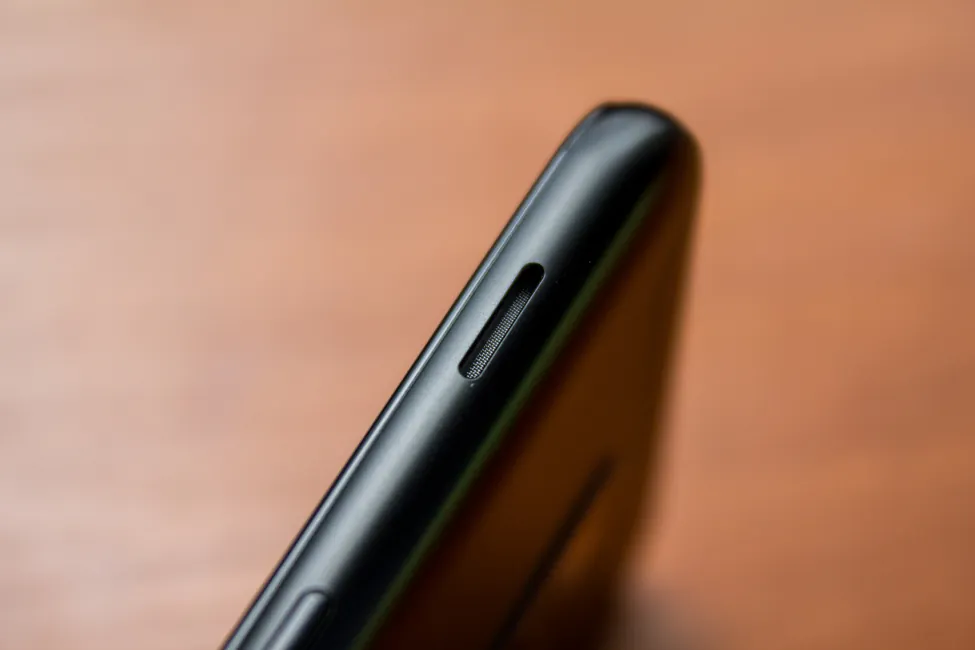
The sound in the headphones is not bad, there are several presets like Dolby Atmos and an advanced equalizer.
There were no problems with the cellular network. The Wi-Fi module (802.11a/b/g/n) works well, the range is normal. The GPS module works fine too. Bluetooth module (4.2 LE) also works well, no disconnections of the synched devices. And of course there is an NFC module for contactless payments.

Firmware and software
Samsung Galaxy A6 is running on Android 8.0 and the proprietary Samsung Experience 9.0 shell.
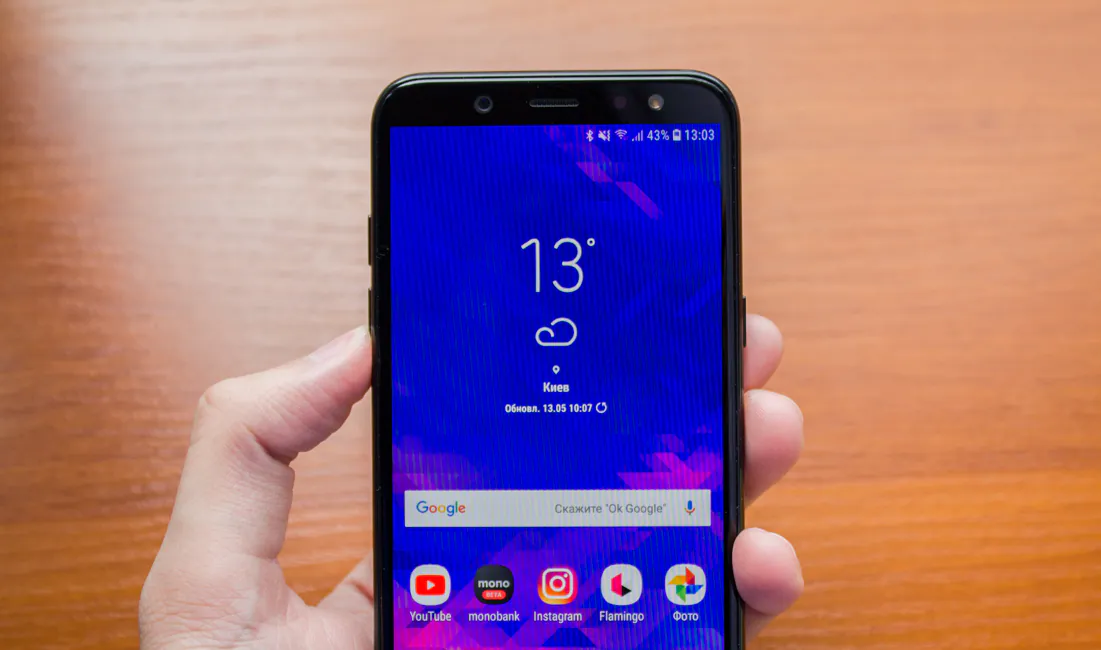
There are shortcuts, split screen, one-handed operation mode. Own store with themes is provided.
You can configure the layout and grid of the main screen, what applications to launch from the lock screen, the location of the navigation bar buttons. Swipe to the right starts the Bixby assistant.
In general, the familiar Samsung shell of with a lot of functions. But why no ALWAYS ON DISPLAY?
The verdict
Samsung Galaxy A6 (2018) is a convenient smartphone with great display, quality materials, good build quality and nice cameras.
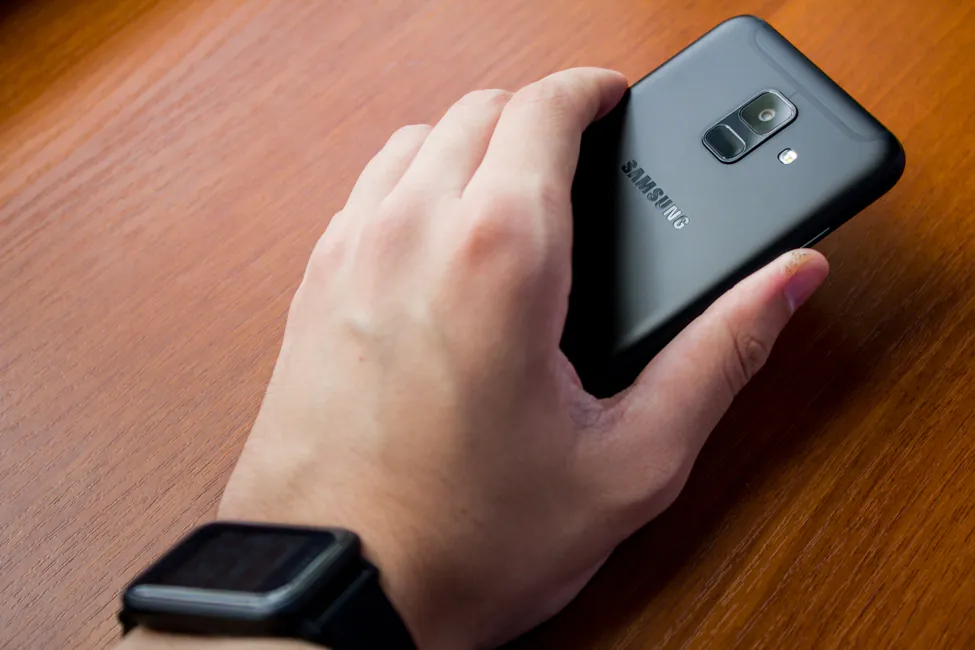
At the same time, there are some minor issues that I have trouble explaining. Like where’s USB Type-C? Still, it is a logical and a worthy addition to the mid-range lineup.
Subscribe to our accounts:


